Want to Draw Block and Tackle Rigging Diagrams?
EdrawMax Diagram Maker offers plenty of tempaltes to design with ease. Give it a try!
Wonder what Block and Tackle are? Here, you will get the answers. Learn how it works, why should be used, and finally get the way to draw a diagram efficiently. Let's get started!
What is a Block and Tackle?
A block and tackle are known to be a system of two pulleys hung via a rope or thread. In fact, two or more pulleys are hung with the same string that is threaded along with them. The primary goal is to lift heavy blocks or items that are unable to be lifted otherwise.
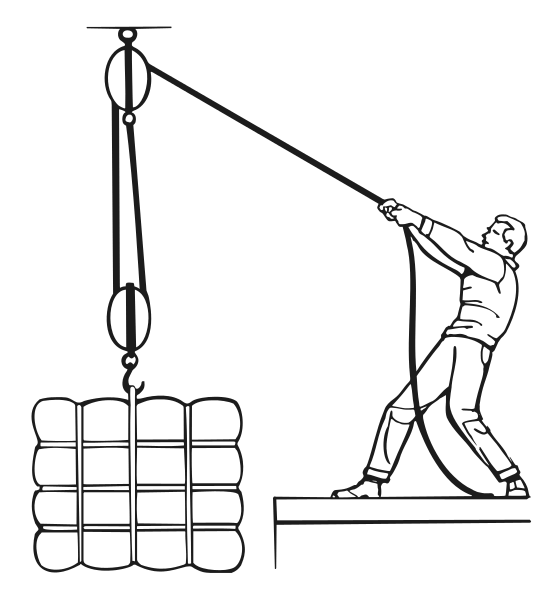
Want to Know More About It?
The pulleys are assembled or put together in a way that they form blocks. In addition to this, these blocks are paired so that one end of the rope is fixed while the other end moves freely to lift the heavy loads.
Furthermore, the rope is threaded along with the blocks to provide it the essential Mechanical Advantage. And this is exactly what amplifies the force that we apply to the rope.
How a Block and Tackle Works?
So, the working of Block and Tackle is a bit tricky. In addition to this, it works to provide the Mechanical Advantage to lift the heavy blocks and loads. However, for your better understanding, we have described the situation that contains various numbers of pulleys. Also, it will provide you a picture of how this Block and Tackle works.
Roping the Pulley Wheels for Lifting
The top pulley is hung on the bar at any height that is easier to reach. Once it is hung, the double tackle can be rigged. It is not necessary to hang just one or two pulleys, and several pulleys can be hung simultaneously.

The end of the rope is passed to the left pulley. It brings the pulley down. Now the lower block rests on the ground, and the rope is passed to the right pulley and both pulleys are hung with the rope.
Rigging Pulleys
Now the rope is brought down and through the bottom of the right pulley. Once it is done, the rope is pulled down to bring both blocks altogether.
Add as More Pulleys as You Want
Now you can add as many pulleys as you want. One pulley gives you one mechanical advantage. So, following this and the rule of thumb, you can hang in as many pulleys as you want, following the same procedure as above.
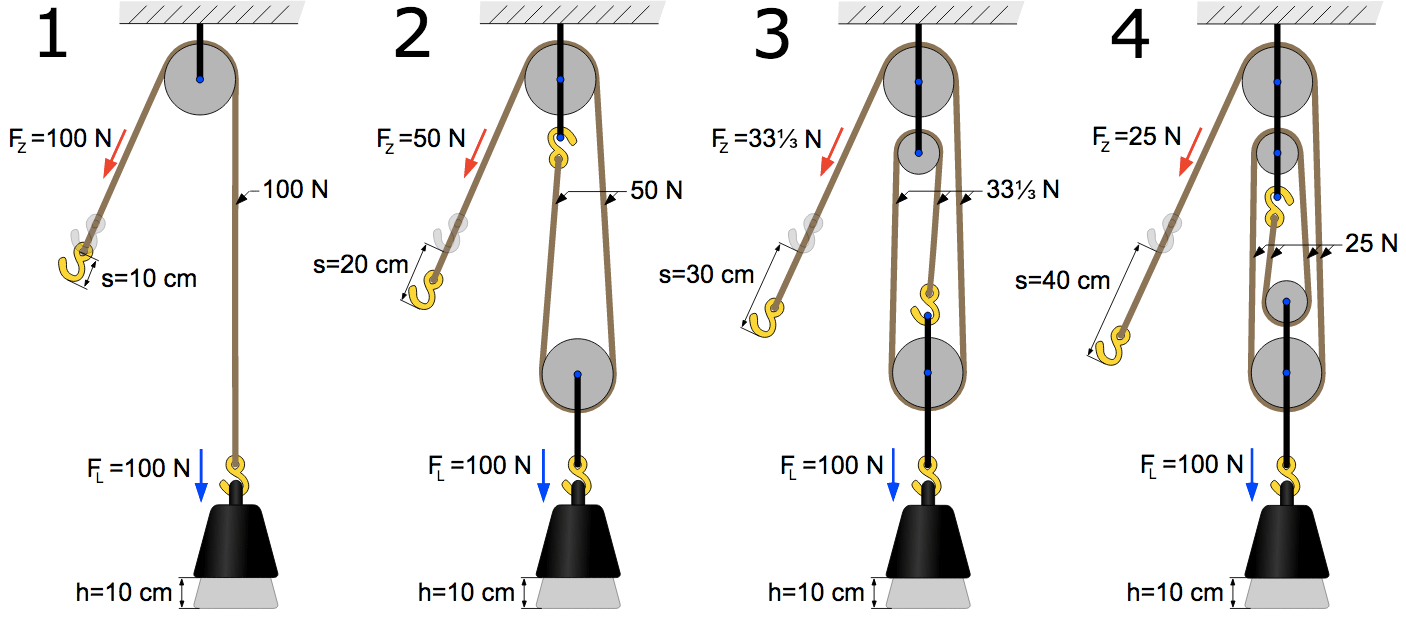
Situations where objects are lifted via two or more pulleys
This has been used by civil engineers and constructors. Lifting heavy loads isn’t an easy task. However, block and tackle pulleys have made our tasks easier. A good example is the construction of a big project. You must have seen those constructors lift the heavy objects via block and tackle containing more than two pulleys. And that is the perfect example for a block and tackle.
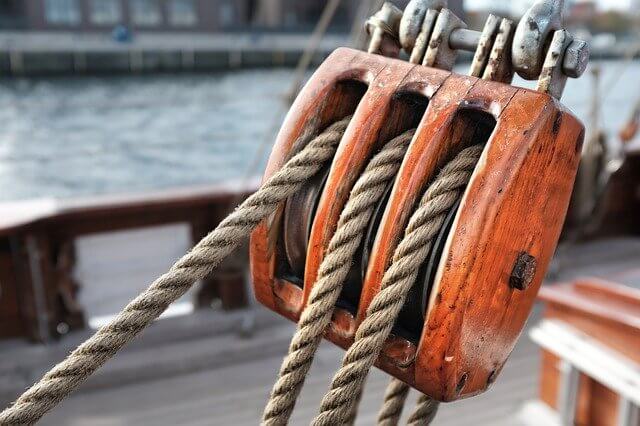
If you wonder how to create Block & Tackle Rigging Diagram in a minute? Try EdrawMax to use pre-made templates and edit by yourself!
Why Block and Tackle is Being Used?
Block and Tackle rigging pulleys are widely being used in the fields of construction and Civil engineering. In addition to this, it has many advantages and disadvantages. For your ease and convenience, we are going to mention some of them.
Advantages of the Block and Tackle Pulley
- It helps to lift heavy loads. In addition to this, the more the number of pulleys, the greater will be its mechanical advantage.
- It can easily be moved if grease or any oil is applied. It also serves as a belt when applied to an engine.
- In addition to this, it is quite easy to make. And needless to say, it is also a cost-efficient method to lift heavy loads.
- It can be moved in any direction if a force is applied because it relies on the relationship between load and effort.
Disadvantages of the Block and Tackle Pulley
- There is a chance of loads being slipped because there is very little friction.
- It does not compare to gears by any means.
- In addition to this, if the rope falls off the track, there can be chances of injuries.
- We cannot transfer it at a high RPM or very high power because it is not an appropriate solution.
- Multiple wheels are used in a combined pulley system, and hence, extra ropes are required to lift the heavy objects.
How to Draw Block and Tackle Rigging Diagram? [Free & Easy to Use]
You can find many tools on the internet that can help you draw Block and Tackle diagrams. It has a very simple method. All you need to do is select any software and follow the steps of drawing block and tackle rigging diagram.
Step 1: Download and open EdrawMax in your pc.
Step 2: Select an empty canvas where you can make your diagram. Or, nagivate to [Science and Education] > [Mechanics], find and open a template.
Step 3: Once you are done with the selection, a page will be opened where you can draw your diagram.
Step 4: Go to "Library" and search for "Mechanics", and you will see all the symbols.
Step 5: Select the symbol and start creating your diagram.
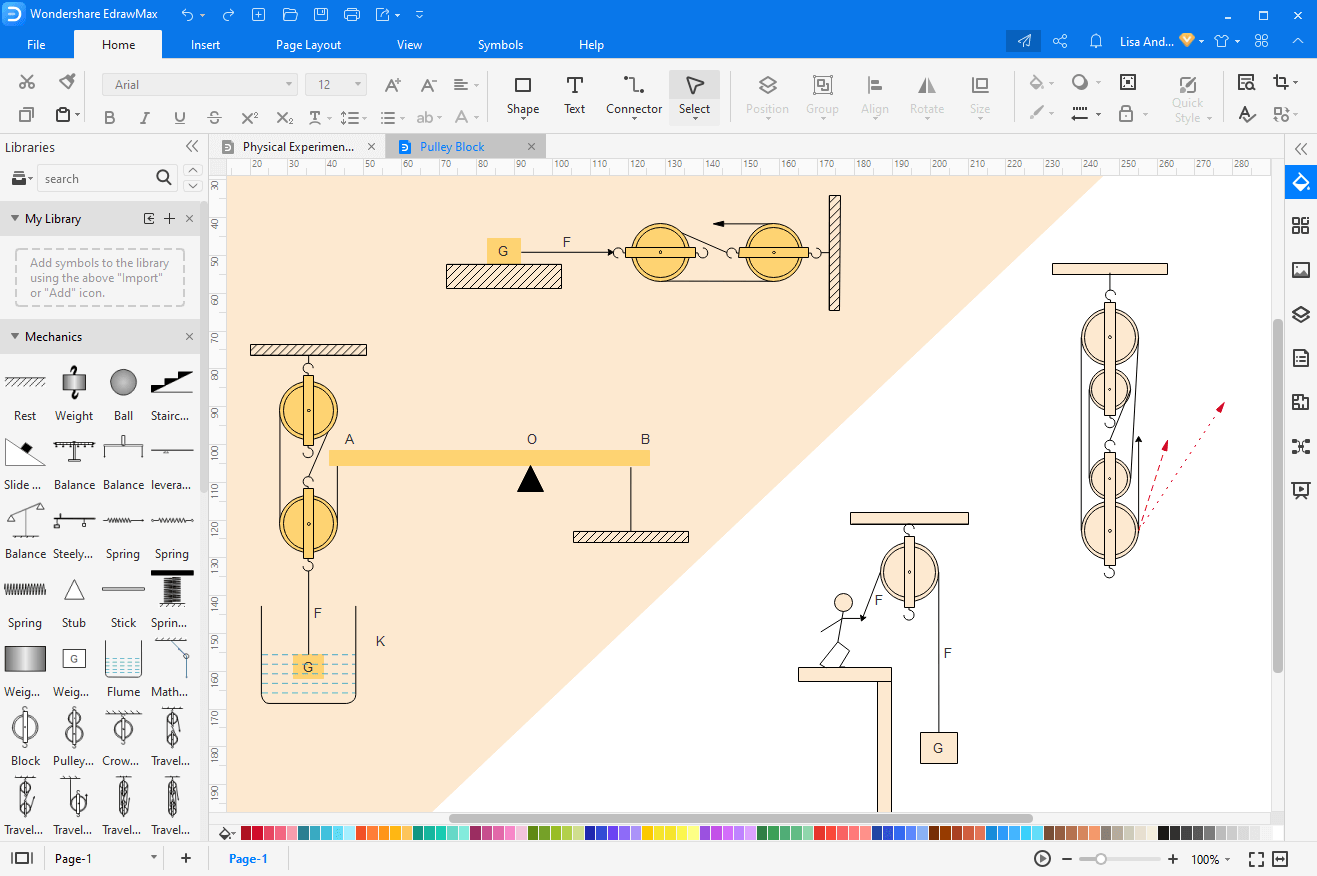
Block and Tackle Pulley Example
So, the above-posted picture is the best example of a Block and Tackle pulley as it displays its clear and primary goal, and that is to lift heavy objects. In addition to this, a man standing on the left side pulls the rope down, the other end of the rope is tied with a heavy load, and this end will lift the load. Thus, the man is pulling the rope down to lift the object, demonstrating how a block and tackle pulley could be lifted.
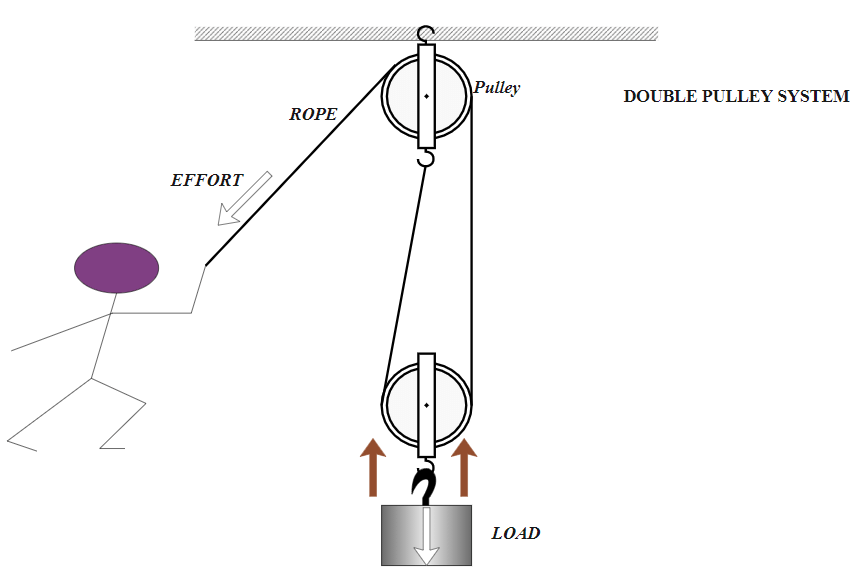
Source: https://www.edrawmax.com/
Wrapping Up the Article!
All in all, block and tackle pulleys are a smart, efficient, and cost-effective way to lift heavy objects. It is widely being used in many fields and has eased the tasks of lifting heavy objects. Block and tackle can be simulated via a diagram that can be drawn with many tools available on the internet. EdrawMax is one of the tools that help you draw this diagram with thousands of built-in tools.


